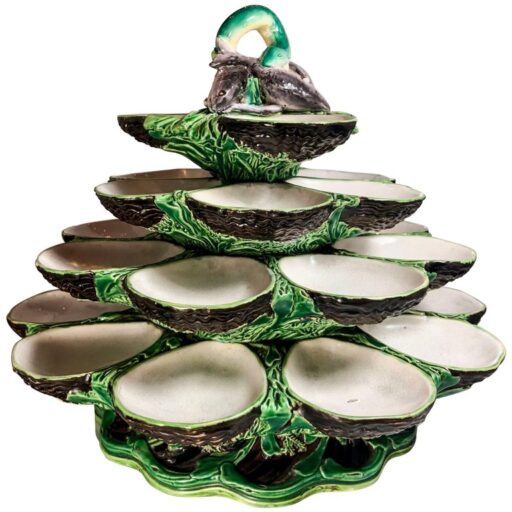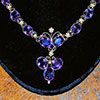Notable Porcelain Makers
ENGLISH FACTORIES
- Bow 1744-1775
Manufacture of early soft-paste porcelain in Great Britain. The factory was located near Bow in what is now the London Borough of Newham. Designs imitated imported Chinese and Japanese porcelains and the wares being produced at Chelsea, at the other end of London. Quality was notoriously uneven; the warm, creamy body of Bow porcelains is glassy and the glaze tends towards ivory. - Chelsea 1745-1770
During the life of the factory four different soft paste porcelain formulas were used corresponding with the Triangle, Raised Anchor, Red Anchor and Gold Anchor marks. Styles also changed from moulded shapes derived from to botanicals and designs froni Aesop's fables and then to the opulent figures and wares of the Gold Anchor period. - Longton Hall 1752-1758
A soft-paste English porcelain. It is both heavy and translucent but has many faults both in potting and glazing. Its typical colours are a pale yellow-green, pink, strong red, crimson, and dark blue. Its mark consists of crossed L's with three dots in blue; most pieces, however, are unmarked. - Worcester 1751-
Production was limited to low-end patterns of mostly Blue and White porcelains after Chinese porcelain designs of the period. - Derby 1756-1849
Showed little foreign influence but were distinctly English, in fact, reflected the silversmithing styles of the period. Many of the pieces of this period were painted, and decorations were done in iron red, blue, purple, and gilt with borders of scrolling, foliage, and pendent urn motifs. - Lowestoft 1759-1803
As well as the distinctive blue and white hand-painted ware, the factory produced pieces with enamel decoration and transfer printing. - Plymouth 1768-1770
It is harder and whiter than some other English porcelains, and its cold, harsh, glittering glaze marks it off at once. - Chelsea-Derby 1770-1784
In 1769 the manufactory was purchased by William Duesbury, owner of the Derby porcelain factory, and the wares are indistinguishable during the "Chelsea-Derby period" that lasted until 1784, when the Chelsea factory was demolished and its moulds, patterns and many of its workmen and artists transferred to Derby. - Bristol 1770-1781
One of the only English factories in which a true porcelain strictly analogous to the Chinese was every manufactured. Harder and whiter than other English porcelains and has a cold, harsh glittering glaze. - Caughley 1772-1814
Caughley produced fashionable blue and white tableware, introducing the well-loved Chinese inspired Willow Pattern design. Its fisherman design forms the basis of the present company logo. - New Hall 1780-1825
Purchased the patent-rights for hard-paste porcelain from Richard Champion of Bristol. The body is of good colour and clear, and the decorations, especially the flowered examples, are remarkable for the brightness of their colours. - Coalport 1790-
Thomas John Bott focused production away from tableware towards hand-painted white parian figurines, which quickly accounted for the majority of Coalport production. - Pinxton 1796-1812
Concentrating on the production of the porcelain rather than its decoration. He made a ware that contained bone ash, was granular yet transparent, and had a brilliant glaze. - Spode 1800-
His early products comprised earthenwares such as creamware (a fine cream-coloured earthenware) and pearlware (a fine earthenware with a bluish glaze) as well as a range of stonewares including black basalt, caneware, and jasper. - Nantgarw 1811-1822
Nantgarw porcelain was sent to London to the likes of Mortlocks to be decorated for the aristocracy and royalty. - Swansea 1814-1824
Half brother to Nantgarw. - Rockingham 1820-1842
Supplying fine wares and ornamental pieces to royalty and the aristocracy in Britain and overseas, as well as manufacturing porcelain and earthenware items for ordinary use. It is best-known for its finely decorated and, to modem tastes, somewhat gaudy rococo style of porcelain. - Josiah Wedgwood 1730-1795
The main themes on the company's jasper ware have all been taken from ancient mythologies: Roman, Greek or Egyptian. The initial decision to have antique designs was probably that as Britain entered an age of great industrialization.


